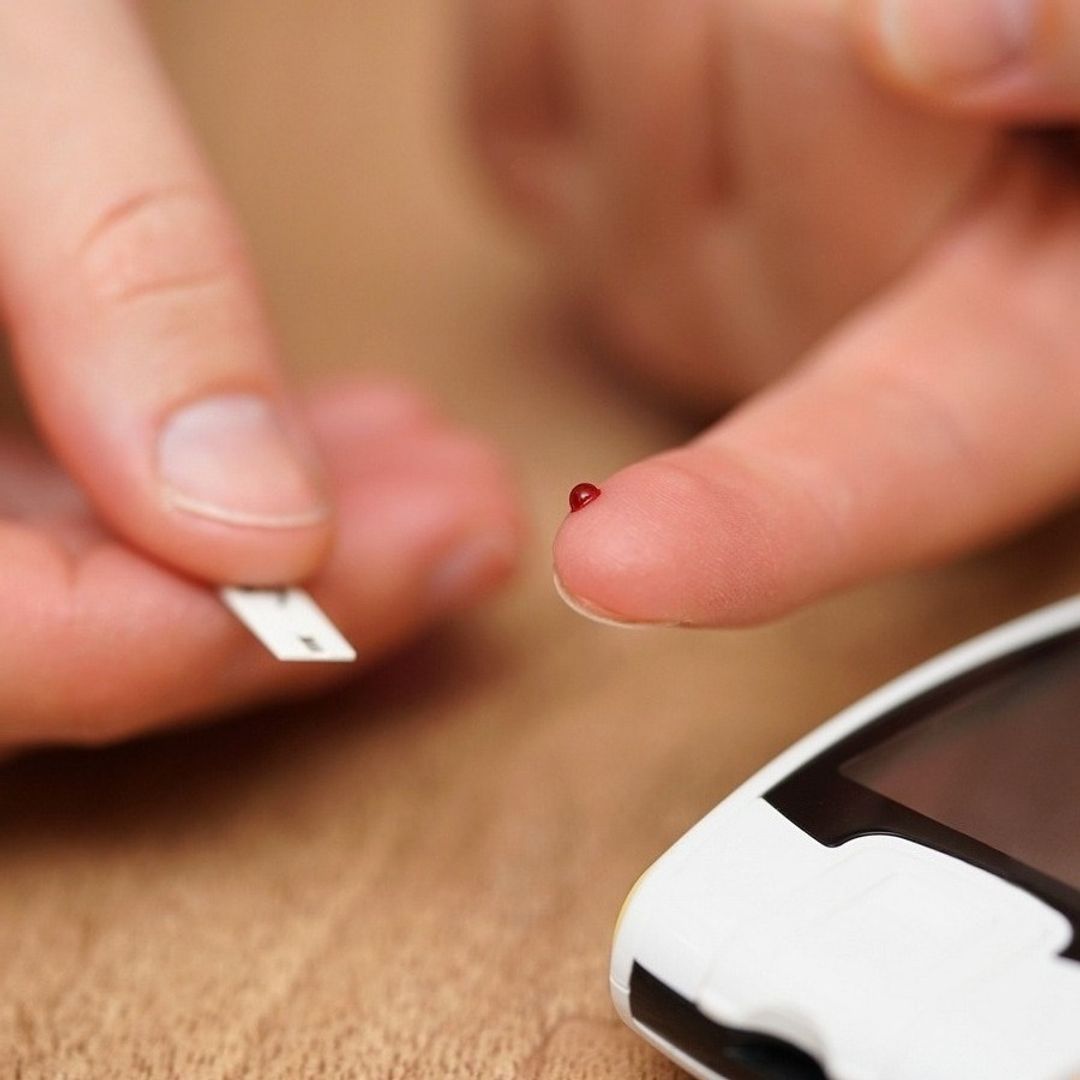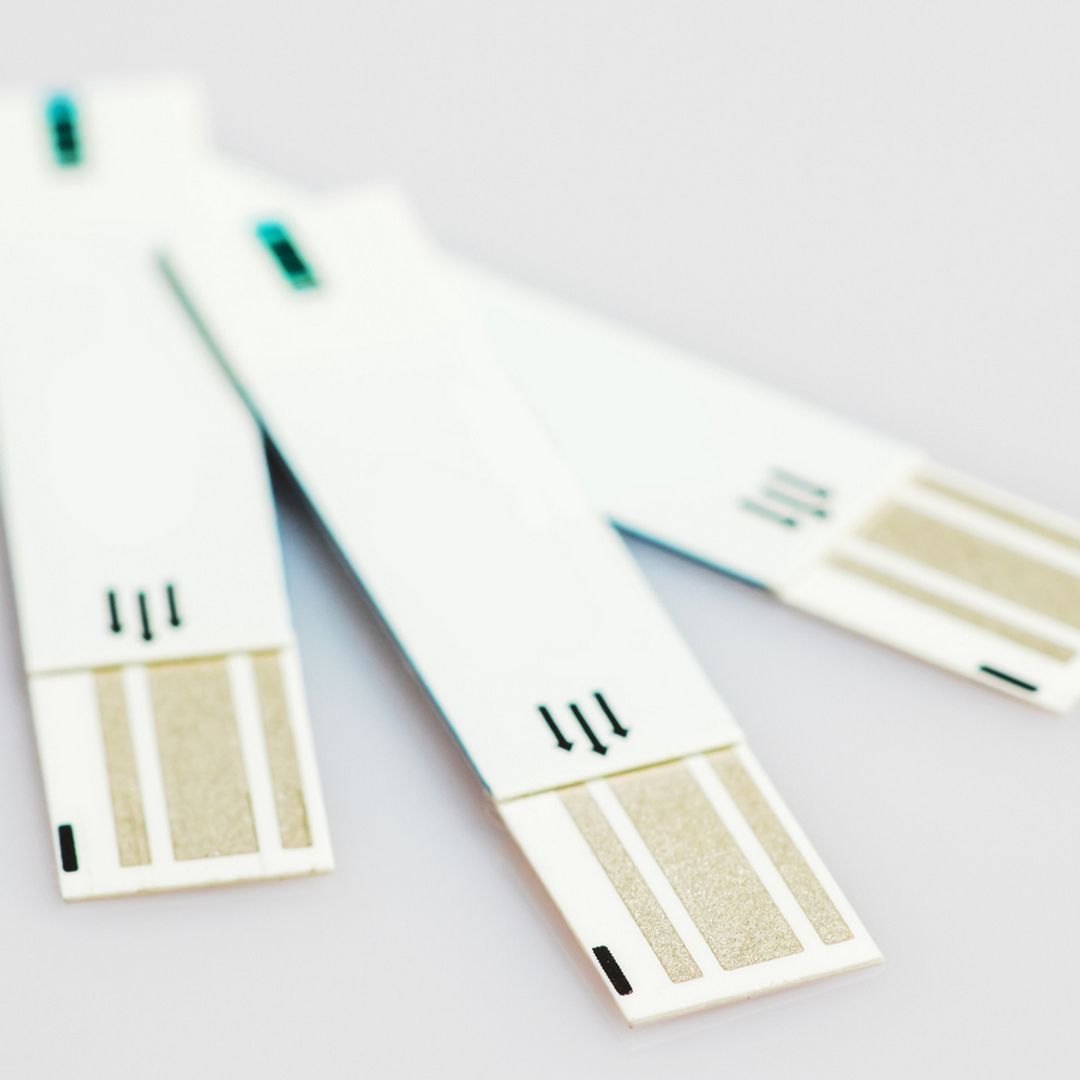Blood Sugar Test Kits Explained: How They Work, Who They’re For, And More

A diabetes blood test kit lets you measure blood glucose levels to learn more about your condition and effectively manage your diabetes as you go about your day, especially in the early stages when the condition doesn’t produce symptoms. This article explores at-home diabetes test kits, including how they work, who should use them, and where to get a diabetes test kit.
The number of people diagnosed with diabetes in the UK has risen by almost 2.5 million since 1996. Even more alarmingly, it is predicted that up to 1 million people currently have the condition without knowing [1].
If you live with diabetes, knowing your blood glucose levels is crucial to ensuring the sugar in your blood remains within a safe range to lower the risk of health complications, such as heart disease, stroke, blindness, and kidney disease. It is normal for glucose levels to fluctuate throughout the day, even in healthy people, but for people with diabetes, these fluctuations can be more volatile, particularly if not kept in check.
A diabetes blood test kit lets you measure blood glucose levels to learn more about your condition and effectively manage your diabetes as you go about your day, especially in the early stages when the condition doesn’t produce symptoms. This article explores at-home diabetes test kits, including how they work, who should use them, and where to get a diabetes test kit.
What Are Blood Sugar Tests?
A blood sugar test is an important tool in measuring diabetes and helping people monitor and control their condition. Keeping track of your blood sugar levels on a daily basis helps you understand how different factors, such as diet, medications, and exercise, can affect diabetes and allow you to implement changes accordingly.
 There are two components to a blood test kit for diabetics: a glucose metre (glucometer) and a test strip. Using a lancet, you prick your finger to draw a drop of blood and then place it on the strip. Once you insert the strip into the metre, it will analyse your blood and display your current sugar levels on the digital screen.
There are two components to a blood test kit for diabetics: a glucose metre (glucometer) and a test strip. Using a lancet, you prick your finger to draw a drop of blood and then place it on the strip. Once you insert the strip into the metre, it will analyse your blood and display your current sugar levels on the digital screen.
Depending on the type of blood glucose monitor you have, it may also provide an average blood sugar reading over a period of time, similar to the HbA1c test you would get from your doctor.
Because glucose levels rise and fall, you usually have to take a test several times throughout the day. Recording these on-the-spot readings will help you track your blood glucose to ensure it consistently remains within the safe sugar levels range (usually 4-7 mmol/l) and allow you to readjust your strategy if necessary.
Besides the finger prick test, people with diabetes can also use a flash glucose monitor that involves placing a sensor under the skin to measure the amount of sugar in the fluid surrounding your cells. It’s important to note that this method is not as quick or reliable as the finger prick test in providing accurate results.
How Do Blood Sugar Tests Work?
At face value, it’s easy to dismiss diabetes testing strips as insignificant pieces of plastic, but the advanced technology behind them can save countless lives.
 This end of the test strip is coated in a chemical called glucose oxidase, while the other end features a circuit made of a thin layer of gold. Once the strip comes into contact with blood, the chemical converts glucose into electricity. The electrical current then travels through the circuit and into the metre to display your glucose levels. The speed at which the current travels through the strip determines the number displayed on the screen; the stronger the electrical current, the higher your blood sugar levels.
This end of the test strip is coated in a chemical called glucose oxidase, while the other end features a circuit made of a thin layer of gold. Once the strip comes into contact with blood, the chemical converts glucose into electricity. The electrical current then travels through the circuit and into the metre to display your glucose levels. The speed at which the current travels through the strip determines the number displayed on the screen; the stronger the electrical current, the higher your blood sugar levels.
Why Are Blood Sugar Tests Important?
Regular blood sugar tests are crucial in identifying important patterns and determining whether your current strategy to control your diabetes is working. If you take certain medications, such as insulin or sulphonylureas, then a home diabetes testing kit can establish if you need to increase your dosage, help you figure out when you need to eat or keep active, and identify how stress and illness affect your blood glucose levels.
Having blood sugar levels that are consistently too high or too low can cause problematic symptoms and lead to serious and potentially fatal health complications later down the line.
High blood sugar levels (hyperglycaemia) can lead to:
- Heart disease
- Kidney disease
- Blindness
- Nerve and blood vessel damage
- Loss of feet or limbs
Low blood sugar levels (hypoglycaemia) can lead to:
- Seizures
- Coma
- Confusion
- Weakness
- Jitteriness
- Sweatin
Who Should Take Blood Sugar Tests?

You’ll need to regularly test your glucose levels if you:
- Take diabetes medication. Certain medications can cause hypoglycaemia, such as insulin, sulphonylureas, or prandial glucose regulators.
- Are pregnant. The placenta releases certain hormones during pregnancy that can make it difficult to control blood sugar, causing gestational diabetes.
- Find it difficult to control your blood sugar levels, otherwise known as brittle diabetes.
- Have low glucose levels without any apparent symptoms; otherwise known as hypoglycaemia unawareness.
- Have high ketone levels as a result of hyperglycaemia.
Where Can I Get A Blood Sugar Test?
If you have type 1 diabetes and live in the UK, blood glucose metres and test strips are free on prescription. If you have type 2 diabetes, you may also qualify for a free prescription; however, this is judged on an individual basis. If you live in the US, your insurance plan may cover the cost of certain monitors.
Other than that, diabetes metres and strips are available to purchase at your local pharmacy or online retailer. Some factors to consider when buying a monitor include ease of use, cost, whether it has automatic coding, the capacity to store previous data, easy portability, as well as the blood sample amount required to produce accurate results.
Some popular diabetes blood test kits include the FreeStyle Libre, Accu-Chek Instant, Dexcom G6, Care Touch, and Bayer’s Contour Next USB.
Take Control Of Your Health With A GlycanAge Test
 While monitoring your glucose levels with a blood sugar test is crucial to managing your type 1 or type 2 diabetes, it provides a limited amount of information on the state of your overall health. In order to gain a better understanding of how well your body is ageing, consider using the GlycanAge testing kit.
While monitoring your glucose levels with a blood sugar test is crucial to managing your type 1 or type 2 diabetes, it provides a limited amount of information on the state of your overall health. In order to gain a better understanding of how well your body is ageing, consider using the GlycanAge testing kit.
A GlycanAge test identifies how your chronological age (the number of years you’ve been alive) compares to your biological age (the age of your cells and tissues). The test assesses the state of your immune system to inform you of lifestyle habits that are making your body age faster; for instance, a poor diet, lack of exercise, chronic stress, etc. Based on this information, you can implement necessary changes to effectively delay and even reverse the ageing process.
Once you receive your home testing kit, all you need to do is a simple finger prick test, send the results back to our lab, and leave the rest to us. After 3-5 weeks of rigorous analysis to obtain the most accurate readings, your results will be ready.
GlycanAge offers numerous price points to meet your budget as well as payment plans to spread the cost over 12 months. A single test (£289) is best if you’re starting out on your wellness journey and want to discover your biological age. Two tests (£492) are highly recommended to track your progress as you work towards healthy ageing. Alternatively, a custom plan is best suited to those who are interested in making long-term improvements to their health, with additional discounts and tailored support.
Moreover, each customer is entitled to a free 1-1 consultation with a scientist and healthcare professional to help you understand your results and devise a strategy to help you reverse your biological age. Order your GlycanAge test now and start your journey towards a healthier you!
Reference
- https://www.diabetes.co.uk/diabetes-prevalence.html



